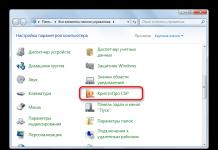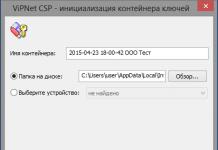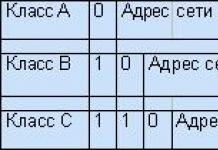Users who have at least once reinstalled the Windows operating system on their own have a question about which drivers need to be installed after that for the normal operation of all devices connected to the computer. In this article, we will look at how to check drivers on Windows 10. The instructions below will work for other versions of the system.
How to check driver version
If you try to figure it out, it will become clear that the computer must have drivers installed for all devices, both external (mouse, keyboard, joystick) and built-in (video card, network adapter, processor). Developers from Microsoft are doing their best to make life easier for users, with each update significantly expanding the internal database of drivers, but sometimes you still have to look for software and manually install it. Four ways will now be presented on how to check drivers on Windows 7, 8 and 10.
Method 1: official websites of manufacturers
The most reliable way to get the latest device software is to download it directly from the manufacturer's official website. But it should be understood that these manipulations are paramount and will not provide all devices with drivers. But this is the essence, first you need to upgrade the main components: the motherboard, processor and video card. But first you need to know the name and model.
Find out the model of the motherboard
To find out the motherboard manufacturer and model, you need to follow these steps:
- Open the Run window. To do this, press the Win + R keys on your keyboard.
- In the window that appears, enter and execute it by clicking "OK".
- The Command Prompt window will appear. In it, write two commands in turn: wmic baseboard get Manufacturer and wmic baseboard get product.
- The issue for the first command will indicate the manufacturer of the board, the second - its model.
Remember the name, you will need it to find the appropriate driver.
Find out the model of the video card and processor
You can find out the manufacturer and model of the video chip and processor in almost the same way:
- Open the Run window.
- Enter the dxdiag command into it.
- Click OK.
- In the window that appears, go to the "Screen" tab.
- In the category "Device" opposite the lines "Name", "Manufacturer" and "Type of chips" the corresponding information regarding the computer processor will be indicated.
- Go to the Converter tab.
- By analogy with the processor, all the necessary information about the video card will not be indicated.

Write down all the data received to search for the appropriate drivers for computer components.
Looking for drivers
Knowing the names of all devices for which drivers need to be installed, you can easily find the software itself for them without much difficulty.
- Go to any search engine.
- Enter the name and model of the component that needs to be updated.
- Go to the official website of the manufacturer.
- In the site interface, find the search bar and run a query with the name of the device.
- Find the appropriate driver in the output.
- Download it to your computer.
- Install.
This is how you can simply update the main components of your computer. Now you know the first way to check your computer drivers, but it is far from the last.
Method 2: Software to update drivers

The previous method of how to check drivers may seem rather complicated to you, and partly it is. For an ordinary user, it will be much easier to use special programs that will automatically scan the computer for outdated versions of software and offer the appropriate updates for them. One such program is Driver Booster.
- Run the program.
- Click the "Scan" button.
- Wait for this process to complete.
- As a result, devices that need to be updated will be displayed.
- If you want to install new versions of individual software, then click "Install" next to the corresponding component.
- If you decide to update all components at once, click the corresponding button on the top panel of the program.
Immediately after this, the process of downloading and then installing drivers for computer devices will start. Your computer may restart several times during this step.
Method 3: online services
Someone fundamentally does not want to install additional software on a computer, in this case there is a great way to check drivers on Windows 10 and in general all other versions of the OS, which involves using online services.
- Open the "Device Manager" and look in it for the device ID for which you want to download the driver.
- Go to the online service to search for drivers by their ID.
- On the main page, enter the identifier in the search box and click the "Find" button.
- The output will display a list of all drivers suitable for your hardware.
- Choose the one you like and click the "Download" button.
- Install.
As you can see, this is perhaps the fastest way to check the drivers on your computer, but it can't help everyone either.
Method 4: updating by regular means of the operating system
Is an update required, how to check the drivers? You can also update them without using additional software through the Device Manager utility.
- In the system search, enter "Device Manager" and run the appropriate program from the results.
- In the list of all devices, select the one you want to update.
- Click on it with the right mouse button.
- Select "Update Drivers" from the menu.
- In the new window, click the "Update automatically" button.

After that, the computer will independently try to find and install new versions of drivers for the component. This method is not always effective, since the search for software goes through the internal Microsoft database.
8021About one of the most likely causes of the blue screen of death is incorrectly working drivers. You can determine the exact cause of the failure by analyzing the dump file after BSOD, but this is not always the case. In some cases, it is not possible to determine the source of the problem even with the most careful analysis of the dumps. In such situations, a regular Windows utility designed for extended testing of drivers can help.
Working in the background, it not only monitors the operation of drivers, but also simulates various "stressful" situations, such as lack of RAM. Information obtained during testing "is being added" to dump file DMP. Driver Verifier allows you to analyze I / O errors, control buffer overflows, detect errors in the mechanism IRQL etc. In a word, the program allows you to identify situations in which the driver can lead to a system crash with BSOD.
The specificity of the utility does not at all preclude its use by ordinary users. Anyone can create a report with its help, it is quite another matter to decipher it. But no one requires this from ordinary users, as for the resulting dump, its analysis can be entrusted to professionals by asking for help from some well-known computer forum.
Important note: before using the utility it is highly recommended create a system restore point or full backup. In Windows 8 and 8.1, you will also need to activate the mode safe boot. This is necessary in case of unexpected errors during the operation of Driver Verifier. This will allow you to boot, disable test mode, and perform a system rollback.
You can run the utility with the command verifier.


In the next window of the Dispatcher, mark the parameters by which testing will be performed (for completeness, you can select all).

In the third window, you can not change anything.

In the fourth window, the utility will prompt you to select a group of drivers for testing.

By default, all unsigned drivers are selected as being at risk, but you can also specify drivers yourself by ticking them in the fifth window of the Scan Manager.


It's all. After restarting the computer, the driver check mode will be activated. All this time, the computer can be used as usual, up to the moment when BSOD. After that, copy the dump file from the directory C:/Windows/Minidump and send it for analysis. It may take a little longer for a PC with driver test mode enabled to boot up, so don't be alarmed. This is normal. After receiving all the data, the debugging mode must be disabled manually by selecting the item in the graphical interface of the utility. "Delete existing settings".
If you suspect that any of the drivers is not working correctly or, after analyzing the memory dump, you have identified the driver that caused the error, then for a more thorough check of the operation of the drivers, you can independently check the drivers using the checker built into the operating system Verifier.exe.
Check for unsigned drivers.
verifier and press Enter.
2) Select an item and press the button Further.
and press the button Further.
Simulation of a lack of resources and press the button Further.
Automatically select unsigned drivers and press the button Further.
If unsigned drivers are found, the system will display a list of them, which will include the driver files and their description. Moreover, the found drivers can belong to both devices and applications. Do not close the Driver Verifier window or press any buttons yet.
Option 1: Update the program or driver.
6) Visit the website of the device manufacturer or the author of the program and download the newer version.
7) Reinstall the program or update the driver.
8) After updating the application or driver, close the Driver Checker window by clicking the button Cancel.
9) Restart your computer and continue working in the operating system.
If the system does not have errors associated with this driver, then updating the driver or program eliminated it.
Option 2: Remove the program or driver.
6.1) Remove the program that owns this driver.
6.1.1) Open Control PanelAll Control Panel ItemsPrograms and Features and uninstall the application that owns the driver.
Before uninstalling a program, make sure that you have its installation disk or that its installation is saved on your disk.
6.2) Remove the driver in Device Manager.
6.2.1) In the menu Start right click on A computer and select the item Properties.
6.2.2) Click in the list on the left on Device Manager.
6.2.3) B Device Manager find the device, right-click on it and select the item from the context menu Properties.
6.2.4) Go to tab Driver and press the button Delete.
7) After uninstalling the application or driver, close the Driver Verifier window by clicking the button Cancel.
8) Restart your computer and continue working in the operating system.
If the system does not have errors associated with this driver, then uninstalling the driver or program eliminated it.
Option 3: Check for unsigned drivers.
Attention! After checking for unsigned drivers, the system may not boot (before proceeding with further steps, read this option to the end).
6) Press the button Ready and restart your computer.
7) Restart your computer
8) Before starting Windows, press the F8 key. When the disk selection window appears: select the disk on which you have Windows installed, press Enter, and then immediately F8.
9) Select item Safe mode
10) Open the dialog menu Run: Start ->
11) Enter command verifier.exe /reset and press Enter.
If the system booted normally, the check for unsigned drivers was successful - they are not the source of the problem.
Checking signed drivers.
1) In the start menu search bar, type verifier and press Enter.
2) Select item Create custom parameters (for program code) and press the button Further.
3) Set the radio button to Select individual options from a complete list and press the button Further.
4) Check all checkboxes except checkbox Simulation of a lack of resources and press the button Further.
5) Set the radio button to Select a driver name from the list and press the button Further.
6) Click on the column heading Provider to sort drivers by their vendor.
7) Select the first 10-15 drivers by checking the boxes next to them in the column Verify.
Do not select all drivers at once, as checking them will take a lot of time and system resources.
8) Press the button Ready and restart your computer. If the system booted normally, the selected drivers were checked successfully - they are not the source of the problem. In this case, repeat the above steps by selecting the next 10-15 drivers.
If a blue screen with an error appears after the reboot, the problematic driver has been identified - its name will be included in the error message. In this case:
1) Restart your computer
2) Before starting Windows, press the F8 key. When the disk selection window appears: select the disk on which you have Windows installed, press Enter, and then immediately F8.
3) Select item Safe mode
4) Open the dialog menu Run: Start -> Run or press the combination Win + R
5) Enter command verifier.exe /reset and press Enter. If the check of all drivers was successful, then most likely the drivers are not the cause of the critical error that occurs on your system.
A faulty driver can cause many problems with your computer. The main sign that your computer has a faulty driver is the blue screen of death, which is often caused by a driver being disabled.
In this article, we will tell you how you can find a faulty driver, and then update it or completely remove it.
Sometimes Windows notifies the user that one of the drivers has failed. However, it happens that the system cannot detect what the problem is, therefore it does not issue error messages, which is why it works slower or not as required. In this case Driver Check Manager(Driver Verifier) creates an additional load on system drivers, thereby trying to cause a crash. If one of the drivers fails, then Driver Check Manager report a problem with a blue screen.
Warning
Before use Driver Check Manager, please note that the tool may restrict you from using your own computer. Because the Driver Check Manager launches a blue screen of death when it detects a faulty driver, this can cause big problems when loading Windows.
If you don't have a chance to get into Windows to disable driver testing, your computer will go into a "boot -> load -> crash" loop that's pretty hard to get out of. The Automatic Repair feature is one of the few options to access Windows, but it's best to avoid this situation.
Before using Driver Verifier, make sure you have at least one of the following escapes:
- You can go into safe mode. Entering Safe Mode before Windows starts loading is usually done by repeatedly pressing F8 while the computer is booting. However, new computers boot up so fast that you simply won't have time to press F8 at the right moment.
- You created a system restore point before using Driver Check Manager. It's also a good idea to have a Windows installation disc so that you can restore your computer to factory settings.
How to run the Driver Verification Manager
Before starting the instructions for use Driver Verification Manager, make sure you read the "Warning" section above. It says how to avoid endless loading of Windows.
When you are one hundred percent sure that you have an emergency exit plan, click " Windows Key + R» and enter cmd in the dialog box Run", then press " OK».

In the command window, enter:
verifier

In the popup window select " Create custom parameters (for program code)", then press " Further».

You will see a list of all the tests that you can run to verify the drivers. Select all tests from the list, Besides"Simulate random resource shortage" and "Additional DDI Compliance Check", then click " Further».

On the next screen select " Choosedriver names from the list" and press " Further».

Here you can select the drivers you want to test. If you don't know which driver is malfunctioning, choose all but Microsoft because they most often work without errors.

When you click " Ready”, Windows will prompt you to restart your PC. After the computer turns on, continue using it as you normally would. If you get a blue screen, pay attention to the error message and restart your computer.
Once you have identified the faulty driver, you can disable Driver Check Manager in one of two ways. You can re-open the command prompt, enter the command verifier, and select " Delete existing options».

You can also open a command prompt and type:
Verifier /bootmode resetonbootfail

After disabling Driver Verification Manager, restart your computer. If the computer does not turn on, then use one of the emergency exits that we talked about in the "Warning" section.
Conclusion
If you think one of the drivers is malfunctioning but can't figure out which one, then Driver Check Manager will be a great help.
However, you should be prepared for the fact that the computer will not be able to turn on after testing the drivers, so consider an emergency exit, such as going into safe mode or starting a Windows restore point.
Have you ever had problems with drivers on your computer? How did you manage to find the faulty driver? Tell us in the comments below!
A driver is a program that is necessary for the operating system and various software applications to interact with the hardware devices connected to it. Hardware components such as sound, video cards, printers, scanners and they all need a compatible driver to work properly.
All device drivers are designed for specific operating systems. For example, Windows XP drivers will differ from Windows Vista drivers. Therefore, it is necessary to take extra precautions when installing and updating device drivers, as installing incorrect or incompatible drivers can not only damage your device, but also your system.
Common Causes of Driver Errors
Some common causes of driver errors are listed below:
- You are trying to use a hardware device that is not properly connected to your computer.
- Two or more drivers on the system are incompatible with each other.
- The driver or drivers installed are not compatible with your system.
- There are unnecessary or outdated drivers on the PC.
Steps to Fix Driver Errors
The first step in fixing a driver error is to make sure the device is properly connected to your system. Many devices give connection related errors, so make sure your device is connected to your system properly. Next, you need to make sure that there are no problems with the drivers. You can do this using the Device Manager utility that comes with your Windows computer system. You can open Device Manager by directly running devmgmt. msc
from the command lineStart>Completedit.
When you open Device Manager, you will see a list of all devices connected to your system. You can easily identify a defective file because it will be marked with a yellow triangle with an exclamation point inside. Right-click on a device to open its properties dialog. In the properties dialog box, check the section Device Status tab General. Drivers are displayed on the Drivers tab of the properties window. Here, perform one of the following tasks:
- Check and Install Driver Updates: Outdated drivers are one of the main causes of driver errors. To solve this problem, click the button Update Driver.The Hardware Update Wizard opens. You can use the wizard to update the driver. It is recommended that you first download the driver update and save it to a convenient location on your hard drive, and then start the update process because the update wizard will ask you to specify a location to install the update.
- Driver rollback: If you started getting an error shortly after installing a new update, then it's likely that the new update is buggy. To fix this problem, click the button Driver Rollback to return to your previous driver version.
- Driver uninstallation: If there are problems with your current drivers - missing or corrupted files - then the best thing you can do is click Delete to uninstall the current driver, and then reinstall the driver again.
In case you are not sure what you are doing and if you find the above fixes a bit complicated, then it is recommended that you choose a reliable driver scan tool. Driver scanning tools are designed to check all device drivers and make sure they are not up-to-date. Whenever new updates are available, Driver Scanner automatically downloads and installs the best updates for your computer.



































